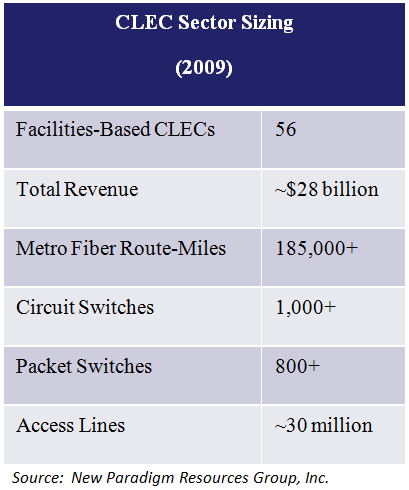
By
Craig Clausen, Ed Gubbins, and Joe Kestel of New Paradigm Resources Group
Having survived two global economic downturns by the time it reached its teen years, the competitive local exchange carrier (CLEC) sector has grown lean, tough and wise. Although this isn't the first time CLECs have begun the long, slow crawl out of recession, the present environment is arguably unlike any they have seen before. Whereas CLECs once positioned themselves as nimble insurgents storming the strongholds of incumbent providers, CLECs themselves are now the prey, beset by newer, nimbler competitors on all sides, from web-based applications providers and wireless carriers to business-focused divisions of cable operators. The strategies and operations of today's CLECs are shaped by a range of specific technological and market trends as well as newly developing opportunities, as New Paradigm Resources Group, Inc. (NPRG) found in its latest intensive examination of the space.1
Setting The Direction: Critical Drivers
Market drivers for the CLEC sector are mild. The strongest drivers mirror those favoring
|
|
CLECs themselves are now the prey. |
|



other sectors in telecom, putting facilities-based CLECs at no net advantage. Others, like customer cost-consciousness, can be a mixed blessing with uncertain long-term effects. One of the principal drivers of telecom service, of course, is rising bandwidth demand, which is in turn driven by applications like video conferencing and web presentation services as well as telecommuting and remote collaboration. But price also plays an important role, especially in a harsh economy.
article page |
1 |
2 |
3 |
4 |
5
|
|
|
|

|

|





